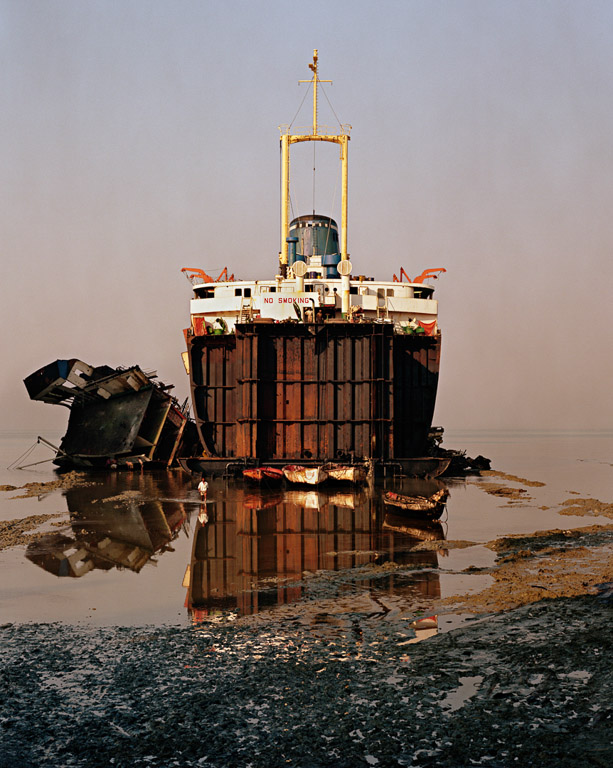Shipbreaking
SHIPBREAKING
Artist's Statement
“The original idea for the shipbreaking started a long time ago. About four years after the Exxon Valdez oil spill I heard a radio program where they were talking about the danger of single-hulled ships. The insurance companies were refusing to cover them after 2004, which would force all these ships to be decommissioned. Only double-hulled ships would be allowed on the open sea to prevent that kind of catastrophe from happening again.
What went off in my mind was, wouldn’t it be interesting to see where these massive vessels will be taken apart. It would be a study of humanity and the skill it takes to dismantle these things. I looked upon the shipbreaking as the ultimate in recycling, in this case of the largest vessels ever made. It turned out that most of the dismantling was happening in India and Bangladesh so that's where I went.” — Edward Burtynsky
Burtynsky's Shipbreaking photographs, like all his works, appear to us as images of the end of time. The abandoned mines and quarries, the piles of discarded tires, the endless fields of oil derricks, and the huge monoliths of retired tankers show how our attempts at industrial "progress" often leave a residue of destruction. Nevertheless there is something uncannily beautiful and breathtaking in the very expansiveness of these images―it is as if the vastness of their perspective somehow opens onto the longer view of things. For Burtynsky, nature itself, over time, can reclaim even the most ambitious of human incursions into the land. As long as human needs and desires change, so too will the landscape.














